Note: We can get pretty cynical around here. So when former deputy director of Bicycle Colorado Amy Morfas wanted to share her thoughts about biking in Portland, I thought it might provide a healthy dose of perspective. – Jonathan
——
There seemed to be no resentment of my presence, just a mutual understanding that people get priority.
When I visit urban areas, I tend to view them through a different lens than a typical visitor might, mainly due to my years of working as a bicycle advocate. Seeing a city through the eyes of a pedestrian or person who rides is very different than buzzing around town in a rental car or an Uber. When you’re walking or riding, you’re within the environment and not just passing through, encased and separate from your surroundings.
I recently had the pleasure of house-sitting in Portland for three weeks. While there, I explored the city as well as the beautiful surrounding areas. What a treat!
For 25 years, I have lived in Boulder, Colorado, a city known as one of the most bicycle-friendly in the country. Until recently, I’d served for almost 10 years as deputy director of Bicycle Colorado, the state’s bicycle advocacy group headquartered in Denver. I also lived in Germany for three years, so I’m pretty familiar with what it takes to make a community work for people, not just cars.
While Boulder has a great network of multi-use paths throughout town, riding in a standard bike lane can be dangerous as drivers tend to often be aggressive and distracted. Denver has only a few networked off-road paths, so most transportation riding there is done in tandem with cars, with the same issues. It’s not ideal.
My initial impressions of Portland were as a pedestrian and I was impressed from the start. I’m a casual runner and had brought my running gear with me, partially to explore the northeast neighborhood I was staying in.
Advertisement
I was immediately blown away by how courteous the drivers were. It was a dramatic difference from what I’ve experienced in Colorado.
While running down a residential side street, I’d come up to larger street where the cross traffic had neither stop signs nor crosswalks. Regardless, the approaching traffic would just stop. Pretty much every time. And not only would they stop, they’d do it about 10 yards back from the intersection, so it was done in a totally non-threatening way. There seemed to be no resentment of my presence, just a mutual understanding that people get priority. In Colorado, sadly, the rhetoric is often that if you’re not in a car, you’re ‘in the way.’
I also got to bike around. I spent most of my time in the central, touristy (wealthier) parts of town, and even for someone who didn’t really know their way around, the city was welcoming.
I’d heard about the “big” infrastructure downtown and headed that way first. It totally delivered. Tilikum Crossing, a bridge that opened in 2015 and accommodates mass transit (both bus and light rail), bicyclists and pedestrians only (no private vehicles), is one of the most impressive pieces of infrastructure I’ve seen in the U.S. After riding across the bridge, I went to check out the Portland Aerial Tram and took it up to the Oregon Health and Science University, which has little to no parking for cars. It’s a shining example of a simple yet innovative way to move people en masse in a high-density area. I also rode from Steel Bridge along the famous Eastbank Esplanade down to the Springwater Trail into the Sellwood neighborhood. It’s such a safe and efficient way to get around without needing to pick up the car keys.
While the bigger, ambitious projects (deservedly) stand out, it was the little things that truly made a difference from the perspective of a visiting cyclist. The clear and thorough signage everywhere made navigating super easy and kept me on track. It seemed like there were bike lanes (many of them protected) and bike signals everywhere. Bump-outs were common to slow traffic down, which already seemed to be traveling noticeably slower (i.e., at the speed limit) compared to drivers in Colorado.
Advertisement
Many of the residential areas also feature greenways; low-traffic, low-speed streets for stress-free riding, making it safe for the ‘8-80’ crowd to enjoy. Portland does a great job of keeping cyclists off heavily trafficked streets with viable, efficient alternatives that minimize conflicts with drivers.
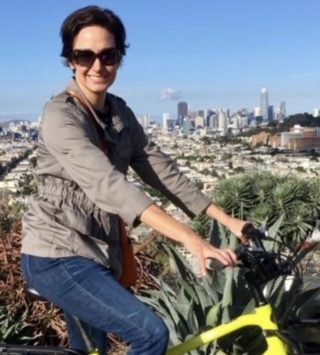
Is Portland perfect? No. But it is an example of what can be done in U.S. cities to provide efficient alternatives to the dependency on single occupancy vehicles we’ve formed. After spending 10 years working in Denver, it’s shocking to see how much Denver is lagging behind in becoming a bicycle-friendly city. And unlike Portland, Denver doesn’t have the expensive bridge infrastructure to contend with. And we have sunshine! Things could happen so quickly in Colorado’s capital if only there was the political will to make it happen. I remain optimistic that it will happen, but the time to act is now.
Downtown Denver Partnership, downtown’s economic vitality member group, has been taking elected officials and city planners on Urban Exploration tours to Copenhagen to show them what can be possible when cities prioritize people over cars. While I’m all for aiming high, a city as advanced as Copenhagen can sometimes seem out of reach. I wonder if similar trips to Portland could be made? It would truly eliminate any ‘yeah, but we can’t do that here’ excuses.
Kudos to Portland’s past and present city planners, elected officials, The Street Trust and other local advocacy groups for all the work they’ve done to make Portland so bicycle-friendly and provide people with real, efficient alternatives for getting around town. I can’t wait to go back.
Until recently, Amy served as Deputy Director of Bicycle Colorado, the state’s leading bicycle advocacy group. She lives and rides her bikes in Boulder, Colorado for transportation and recreation and remains committed to and passionate about people-first communities.
— Get our headlines delivered to your inbox.
— Support this independent community media outlet with a one-time contribution or monthly subscription.


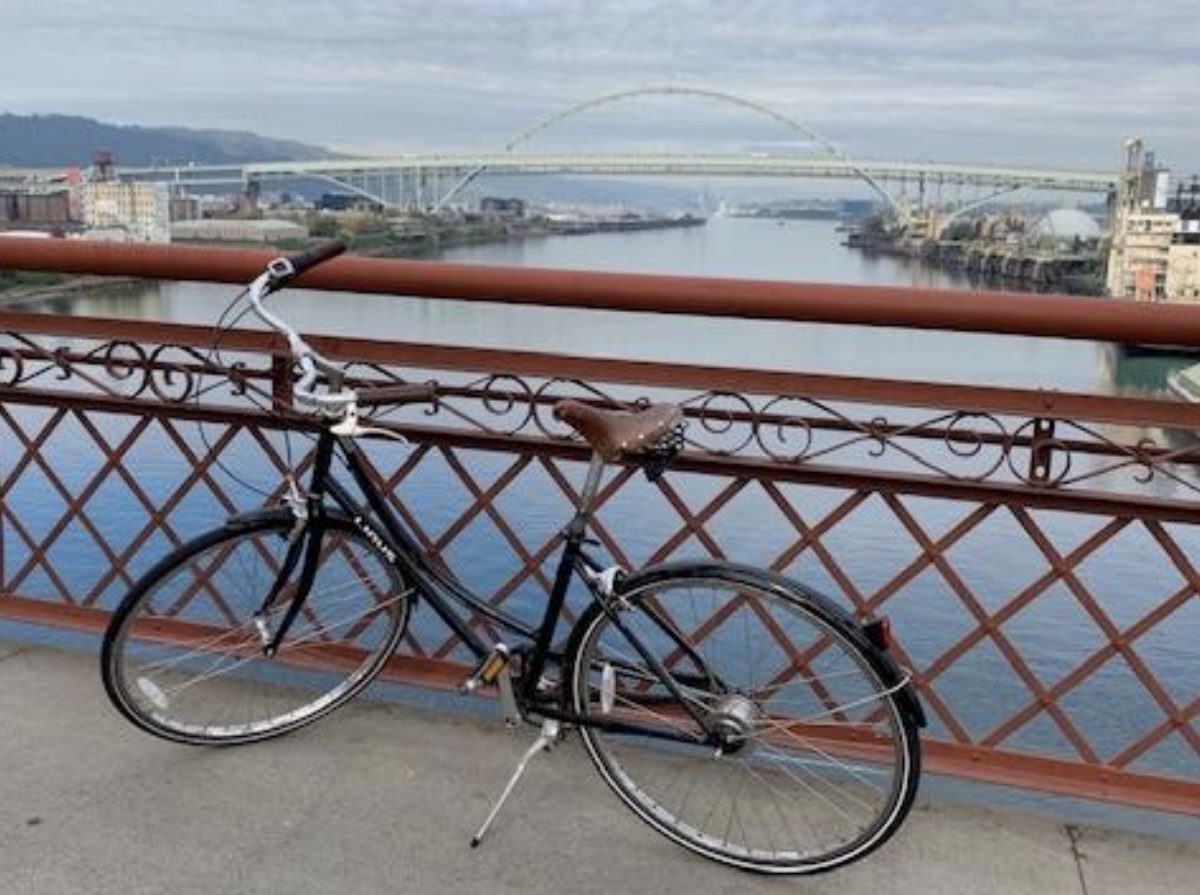

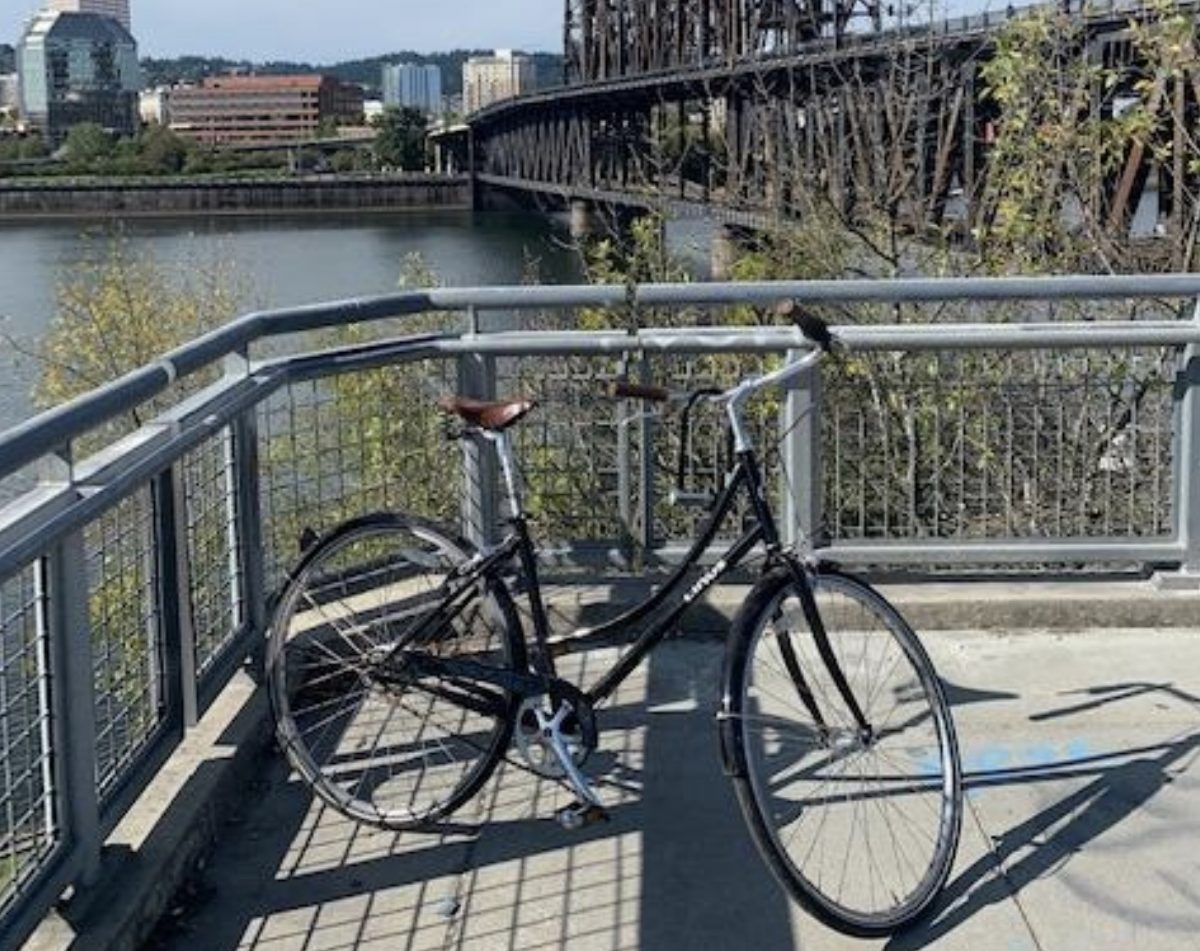
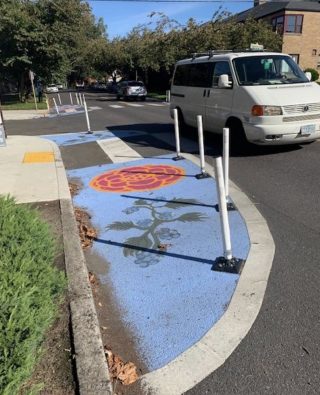

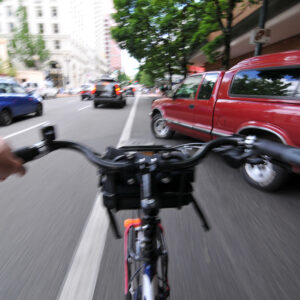
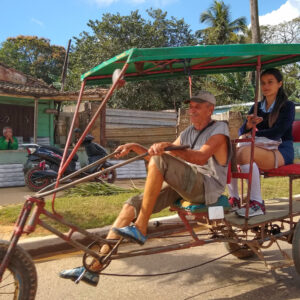

Thanks for reading.
BikePortland has served this community with independent community journalism since 2005. We rely on subscriptions from readers like you to survive. Your financial support is vital in keeping this valuable resource alive and well.
Please subscribe today to strengthen and expand our work.
Thank you for sharing. I’m generally pretty critical of our bicycle infrastructure here, but we’re pretty fortunate compared to many U.S. cities. I lived in Denver 17 years, and biked extensively around the Front Range. When I return now for visits (after 8 plus years in Portland), I’m terrified as a pedestrian and cyclist in a city that’s purportedly among the ten best in the country. There are far too many four-lane roads cutting with traffic moving at high speeds through dense areas, and drivers – as Amy eluded to – consider pedestrians and cyclists a nuisance. It’s even worse where I grew up, in Cincinnati. This does not mean, however, that we don’t have a ton of work to do. We do, and for so many reasons – safety, climate change, and simply for quality of life. I’m heading to Europe in June, and I suspect I’ll be able to write the exact piece that Amy did, but in reverse. While Portland is a great U.S. cycling city, we’re not a great cycling city globally, and that’s what we need to strive to be.
Thanks, Glenn. Yes, I worked on Market Street in LoDo which was three lanes of one-way traffic with two additional lanes of parking. Traffic would get close to 50 mph through the middle of downtown Denver. Total insanity. It’s a shame more hasn’t been done.
She’s right, it’s better to get around by bike in Portland than in Denver or Boulder. However, I couldn’t help but think that she’d be writing something different after 6 months of commuting at peak rush hour, preferably during the school year. Most of the greenways aren’t 8-80 friendly, and a little farther out to the parts of the Creston area and Woodstock/Foster-Powell/Mt. Scott-Arleta neighborhoods and drivers really don’t stop as well for pedestrians outside of marked crosswalks as they do in closer-in areas of Portland.
I have only been to Denver’s airport and ridden through it on a train. But if it is as much worse than Portland as the author says I am terrified to ever actually go there.
If you can handle downtown Portland, you can handle most US downtown cores. It’s not that bad as long as you stay alert and don’t act like an idiot. Downtown Chicago, LA, and DC are busy, but drivers are generally predictable. As in Portland and Seattle, avoid freeways in Charlotte, Minneapolis and Denver. Residential areas are typically pleasant, arterial roads less so, but every city has an outer Division, a McLaughlin, and a 122nd, but with different names; same busyness, same congested traffic, but a necessary route to get to businesses. And thanks to Google maps, you can usually find the back street routes local bicyclists use rather than the streets car drivers use. University towns are typically very nice to ride: Boulder, Madison, Ann Arbor, Tuscaloosa, Chapel Hill, Charlottesville, and so on. New Orleans is a treat. No matter where you go, lock your bike like you are in Portland – better paranoid than sorry.
Denver is just very sprawled out. It’s not hard to walk around downtown, but it is hard to get to most places without a car.
It really doesn’t get much worse for cycling than Denver, particularly as a recreational cyclist. They have these bike paths that go all the way around and through the city. It is so much better in Portland where the bike path just ends and you get to figure your way through some random neighborhood or better yet you can come around a corner and some bros are have an inviting campfire set up in the middle of the bike path. Of course, you also have to acknowledge there are hundreds of miles of mountain biking within an hour of downtown, worse yet, you can ride a bike path to the start of the Colorado Trail from downtown Denver, LOL, wut. I mean, who wants to ride a mountain bike close to town, like driving to Bend 3.5 hours on a two lane road is so far superior. The worst, absolutely the worst though is that they keep putting in these bike paths. For example, if you rode to the west side of Denver, through Golden and on up Lookout Mountain and said, hey, it would be fun to loop around to Evergreen, you would have to ride on Interstate 70 for a couple miles to do that, welp, they went and put in a bike path to keep from sharing a shoulder with glass, gravel and semi-trucks, so lame. But wait, here is the absolute worst of the worst, about 5 years ago, when fortunately Portland wasn’t building any bike paths at all, they went and put in a bike path from the Northwest corner of the city All. The. Way. To. Boulder. It is miles and miles of concrete and takes you all the way to Boulder and the absolutely horrid roads they have to ride and some of the worst meandering gravel in the entire world. Yes folks, the Denver metro is absolutely the worst and Portland just has it dialed.
The Denver area does a pretty decent job with trails and separated paths, as you allude to. It’s solid for recreation. It’s awful for commuting and getting from Point A to Point B.
You are completely missing the point, and the heavy sarcasm just makes you look silly.
Denver is great for recreational cycling. No one is arguing that.
If you lived in Park Hill, or Montbello, or Aurora, how would you get to downtown Denver for work on a bike? What about Berkley, or Edgewater? Would you ride those routes with your kids?
I am completely missing the point, then you list a bunch of neighborhoods and cities that are either close in to downtown and have a variety of options for getting to the CBD, or are adjacent to the exact regional paths I was referencing.
If I lived in Park Hill, like I used to, I would ride south to Montview, ride the bike lane to City Park, through the park and then likely take 22nd straight into downtown. If I lived in Montbello, I would ride west into Northfield then use the infrastructure there to cross I-70 and get on the Sand Creek Path to the South Platte trail, then get off the trail right in downtown, like magic. Aurora is more complex due to its size (kinda makes it an arbitrary selection as well), but North and South Aurora have pretty good connectivity to Sand Creek and Cherry Creek trails via Toll Gate, so I would use either of those to get to the previously mentioned route into downtown via the south Platte, or use Cherry Creek trail to get off the path, right in downtown.
If I lived in Berkley, I would ride the Clear Creek trail to South Platte straight into downtown. In edgewater, I would either ride through Sloans Lake and then streets to the south Platte trail or south to Dry Gulch and take the trail to the south Platte trail.
No maybe it can get a little dicey in downtown, but that is no different than Portland and the size of downtown is pretty similar, so it really isn’t that bad.
I chuckled when I read this as I’m something of broken record when I read tales from some in bikeportland of how horrible it is here for bikes now, and how great other places are. My first thought is “you need to get out more”. I lived in Boulder 20 years as a cyclist. Other US places may read like they have better cycling than here, but an in the saddle experience quickly resolves that. Portlanders read spec about ambitious bike infrastructure in NYC for instance, then bemoan how far we’ve fallen etc. New Yorkers love bike lanes because it gives them a place to double park their cars. Cops there are virtually at war with cyclists. A half hour ride in almost any other US city will have you feeling MUCH better about our imperfect infrastructure!
Now true; compared to much of Europe we ARE horrid as the best here compares with the worst there. But in comparison to other US cities Portlanders take for granted what’s been done here to date, even if not yet what we all want to see.
The Denver Metro is great for the brave and not so great for anyone else. Sure, there are trails but in reality, if people saw a real bike town, Denver is ok. People die every summer on bikes.
“Every corner in Oregon is a crosswalk unless otherwise marked a prohibited. This is the law. ”
it is the law…not arguing…but its unnecessarily lazy.
It also happens to be the law in NYC, but good luck finding an intersection in manhattan that doesn’t have either a traffic control device or a marked crosswalk.
in a 5 words or less: “yes”
The cost of marking crosswalks at every intersection would run into the millions of dollars. Many would have to be refreshed annually.
It’s not clear whether pavement markings do all that much good from a safety standpoint. Having them at every intersection would probably decrease their effectiveness.
I’d rather the limited dollars be spent on more rapid flash pedestrian beacons or similar treatments at high ped/bike volume intersections or to address specific safety issues.
Since the PPB isn’t really in the traffic enforcement business any more, pavement markings will not really be of much help
FTR my suggestion was even MORE costly…I suggested paint OR traffic control devices at every intersection…at least in core of city. As much as PDX has grown its absurd to have 3-4 lane roads with non-signalized intersections and pretend that “every intersection is a crosswalk” is legitimate and plenty.
It’s not that Portland is so great, it’s that Portland sucks less than other places.
Build more separated facilities. Lets get npGreenway built.
Thanks again for another perspective. I’m going to go on being privately grateful for the things that stand out, that would fit in anywhere, like the East Side esplanade.
I’m also going to go on asking for more diverters and better pavement on greenways. Neighborhoods should be set up so that there’s no Waze through them, and cross town bus lines should be set up to rock, with restricted lanes, automatic car launching bollards and signal priority giving them a green they can roll through at 10+ mph. Why does a bus ever come up against a red octogon? Why does a bus ever need to grovel across bloody NE Prescott? That’s BS, Portland.
Thanks, John. Yes, a friend mentioned to me that is the law there, but the degree to which the law was acknowledged and followed (sadly) blew me away.
Yes, it’s the law in almost every state. What’s different about Portland* in this respect is not the law, but that drivers actually respect it, observing implicit crosswalks and generally respecting pedestrians as humans with the right to be there.
Here in Minnesota, as a cyclist I get more respect from drivers than I do in Oregon. But as a pedestrian, I mostly** don’t exist. Drivers will blow through marked and implicit crosswalks; when making a turn where a pedestrian is crossing with the WALK, they will come too close; when coming to a red light, they will often stop past the stop line, blocking the crosswalk. And when a driver blocking a crosswalk (whether improperly stopped, or trying to pull out onto the street) and then a pedestrian comes along, they will never, ever EVER back up, make eye contact or apologize in any way. Portland drivers will sheepishly apologize, and back up if there’s no one on their rear bumper.
* This is true of Portland drivers generally, but goes downhill quickly as you move out to the suburbs. Years ago, my younger child went to preschool in SW Portland (which technically was not even a suburb, though very suburban). It was a nightmare trying to cross streets, even at crosswalks, and have drivers stop for us. In one memorable incident, as we were walking across the parking lot to the school, a fellow parent (who had JUST failed to stop for us) said, “that’s walking for you.” A lot of the wonderful stuff that happens in Portland is within a pretty small bubble.
** As I’ve mentioned here before, St. Paul is one exception to the rule of Minnesota drivers not yielding to pedestrians who have the right of way. This was not the case 5 years ago when I moved here. What has changed is enforcement: St. Paul Police decided to start caring about this. Guess what? So do drivers, now. My wife talks to cops regularly, and St. Paul officers seem to take this seriously. Minneapolis and Richfield officers don’t seem to give a shit about pedestrians – it’s still all about cars – and this is reflected in driver behavior.
It’s been 25 years since I lived in Denver, and I was only there for five years, but I did get the sense that a lot of people there drive with chips on their shoulders. Make space for a car merging onto I-25? Ha! Find your own space! We have people like that in Portland (see: rolling coal), but it feels like a much smaller minority.
We have coal rollers in Colorado, too. Bicycle Colorado worked to get a law passed a few years ago really increasing fines. But, of course, enforcement is tough.
This is a great piece. I have been reflecting on how many positive interactions I have with drivers in Portland relative to the few bad ones.It really looks to me as though there’s a critical mass of drivers in Portland now who have enough experience being pedestrians or cyclists that they drive with empathy, regularly yield to more vulnerable users, and understand that more bikers and pedestrians make our streets safer as well as critical to climate smart cities. The culture of safer, more complete streets is progressing; we need the infrastructure and programs to take us to the next level.
About 10 years ago I worked with a guy for a while who had just moved from Denver to the Beaverton area. He thought Portland was terrible for biking: “where are all the bike paths?” He moved back after a year or two. I think he was happier with what Denver had to offer, FWIW. Of course this was 10 years ago … but then again, this has been the decade of stagnation.
“just moved from Denver to the Beaverton area…”
And what did he say about Portland cycling?
“And what did he say about Portland cycling?”
He wasn’t impressed with Portland either, because of the paucity of separated infrastructure. Like most “Interested but Concerneds” he wasn’t comfortable being separated from cars by 6 feet and a line of paint.
And even the wonderful (compared to most of America) bike lanes in Portland only benefit the central part of the city. Only a small portion of the metro population is positioned to take advantage of the good stuff. If you’re east of 205, not so friendly. If you’re west of the river and south of 26 (which is a HUGE swath of the city, by the way), even worse – as I know firsthand, from commuting through there for a decade. And Portland’s only about 30% of the metro area: progress is being made on the westside at least.
One thing I have been grateful about has been the alignment and support we get from the city to increase modeshare to allow for all types of non-automotive transport and at least have people reduce their car usage. We aren’t actively fighting PBOT all the time; bike project and rose lane projects seem to be moving forward with gusto. We have bike advisory committees, and a lot of PBOT employees I met ride bikes themselves and seem to have a good sense of urban planning–they don’t seem like your typical bureaucrats (although I imagine there are some). I don’t know if any other city in the United States has this level of alignment and forward thinking. We’re getting two non-automotive bridges–what other cities so willingly build these, at least knowing that they are not built to carry any degree of car traffic? We definitely have that to be thankful.
With that knowledge though I often have high expectations of a higher quality bike street and its in the implementation that I feel PBOT falls short. Some bike streets don’t go far enough in my estimation to providing real meaningful “low-stress” bikeways and often time feel more symbolic than anything–just throw some paint, maybe a few speed humps, and call it a day. Some bike streets intersect with major thoroughfares that provide the opposite of a “low-stress” experience.
For example, at 29th and Belmont there is no signal crossing there. There is simply a cross-bike striping, which apparently has no legal protection to allow a cyclist the right of way. Why put it in if it is effectively useless? These cross bikes are implemented across the city, yet it’s function is a Potemkin bike infrastrucutre. I can also point out at 16th/Morrison one has to gun it across three lanes of traffic.
I’m all for trying out new ideas but some (like the bike rotary on Milwaukie) are plain silly and provide more confusion than they solve. I think if you stuck to bread and butter ideas of keeping the tarmac smooth, traffic diverted off the street, and signaled intersections, you’d have a more inviting and appropos “low-stress” bikeway. It might be a more meaningful commitment to bikes/scooters, etc. and one that’d I’d welcome.
Of course this costs money, but it was my understanding that building bike infrastructure is vastly cheaper that building for cars.
Portland would seem like an amazing ride after dealing with the nuttiness of Denver.
I ride my bike in Portland every day – for commuting, work, shopping, and also recreation. When I meet someone driving a car or truck and have an unpleasant interaction, I try to think about the story the driver is telling himself (or herself, but usually himself) about why I’m cycling. If the driver’s story is about how I am out there pleasuring myself on a bike, then he is more likely to be pissed off at me for getting in his way, esp if he’s working or on the way to work. So it’s really important that drivers hear stories about cycling for reasons *OTHER* than just recreation, though of course that’s a legitimate use of the road in itself.
A few years ago, during one of Portland’s snow-and-ice episodes (winter arrived for 4-5 days and no one is ever prepared for it), someone in my house needed medication. The roads were largely impassable, so I ran, with crampons on my running shoes, to the pharmacy and back. The sidewalks weren’t shoveled, of course, so I had to run on the side of the road, which had been nominally plowed, and practically every driver tried to honk me off the road for having the audacity to run there! I was carrying a bag from the pharmacy, yet those drivers must have thought was I running for fun in the snow (and it was fun but that was not the point).
Let’s promote stories of cycling (and running) for serious purposes, so every driver assumes the other person has a right to the road also.
Thanks, Amy! I’ve lived here for 25 years and have been lucky enough to reap the rewards of the expensive infrastructure put in place in the 1970s and ’80s. I also just got back from spending a few days in Boulder and Denver where my daughter and I explored by bike. We (and you) are lucky to have the infrastructure we have as opposed to so many cities that want it but are struggling to deal with the costs associated. Thank you to all the past city officials, current bike advocates like The Street Trust, and bike riders who take advantage of what we have.
a little late to the conversation here but I’ve lived in Portland for about a year now and went back to Denver for a work thing in September, brought my bike. Rode to the work thing daily through downtown and was so disappointed in the city I used to think was bike friendly. Wide streets, zero traffic control, anarchy in the streets compared to Portland commute hour. On top of that, the proposed routes out of town both the Cherry Creek direction and the Golden/Boulder direction are well utilized but not different than the Springwater. IMO Portland is doing much better than
Denver, or Boulder in addressing real commuting concerns. Boulder probably wins when it comes to exercisers doing their thing.